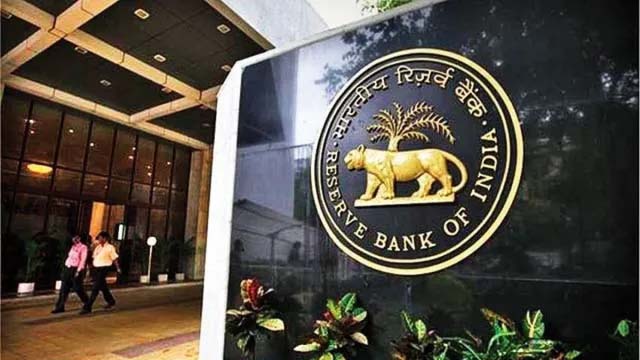The Reserve Bank of India (RBI) declared in its yearly report published on Thursday that the Indian economy is poised to expand at a rate of 7 per cent in the ongoing fiscal year commencing in April.
In the financial year spanning April 2023 to March 2024, the Indian economy witnessed a robust surge, with real GDP growth soaring to 7.6 per cent from the preceding year’s 7.0 per cent, marking the third consecutive year of growth at or above 7 per cent.
“The anticipated real GDP growth for 2024-25 stands at 7.0 per cent with risks distributed evenly,” the report highlighted. Despite facing persistent headwinds, the economy exhibited resilience during FY24.
The Reserve Bank’s Annual Report underscored that the Minimum Support Prices (MSPs) for both kharif and rabi seasons in 2023-24 guaranteed a minimum return of 50 per cent over the production costs for all crops.
As of March 31, 2024, the overall public stockpile of foodgrains stood at 2.9 times the total quarterly buffer norm, as per the report. On November 29, 2023, the government extended the scheme of free foodgrain distribution under the Pradhan Mantri Garib Kalyan Anna Yojana (PMGKAY) for an additional five years, effective from January 1, 2024.
The report, a statutory submission from RBI’s central board of directors, observed that agriculture and allied activities encountered obstacles due to the irregular and deficient south-west monsoon (SWM) rainfall coinciding with strengthening El Nino conditions. The overall SWM rainfall in 2023 (June-September) recorded a 6 per cent shortfall below the long period average (LPA) at the national level.
According to the second advance estimates, the production of kharif and rabi foodgrains in 2023-24 witnessed a 1.3 per cent decline compared to the final estimates of the preceding year. The report pointed out the potential for increased productivity in millets.
In 2023-24, MSPs witnessed increments ranging from 5.3-10.4 per cent for kharif crops and 2.0-7.1 per cent for rabi crops. Moong saw the most substantial MSP increase among kharif crops, while lentils (masur) and wheat experienced the highest increments among rabi crops.
The balance sheet of the Reserve Bank expanded by 11.08 per cent to Rs 70.47 lakh crore as of March 2024, leading to the highest-ever dividend payout to the government, according to the central bank’s annual report. In absolute terms, the increase amounted to Rs 7,02,946.97 crore from Rs 63.45 lakh crore as of March 2023.
The net income of the central bank stood at Rs 2.11 lakh crore by end-March 2024 after accounting for a provision of Rs 42,819.91 crore, significantly lower than Rs 1,30,875.75 crore in the preceding fiscal year. The provision amount is transferred to the Contingency Fund (CF). The net income for 2022-23 was Rs 87,420 crore.
Similar to 2022-23, no provision was made for the Asset Development Fund (ADF) in the review year. The Reserve Bank’s balance sheet reflects activities conducted in pursuit of various functions, including currency issuance, monetary policy, and reserve management objectives.
Recently, the RBI sanctioned the highest-ever dividend payout of Rs 2.11 lakh crore to the central government for 2023-24. The dividend or surplus transfer from the RBI to the Centre amounted to Rs 87,416 crore for the fiscal year 2022-23. The previous record was Rs 1.76 lakh crore in 2018-19.
As per the RBI’s Annual Report for 2023-24, the rise in assets on the balance sheet was attributed to increases in foreign investments, gold, and loans and advances by 13.90 per cent, 18.26 per cent, and 30.05 per cent, respectively.
On the liabilities side, the expansion was due to increases in notes issued, deposits, and other liabilities by 3.88 per cent, 27.00 per cent, and 92.57 per cent, respectively. The RBI further stated that domestic assets comprised 23.31 per cent, while foreign currency assets, gold (including gold deposits and gold held in India), and loans and advances to financial institutions outside India constituted 76.69 per cent of total assets as of March 31, 2024, compared to 26.08 per cent and 73.92 per cent, respectively, as of March 31, 2023.
As of March 31, 2024, the Reserve Bank holds 822.10 metric tonnes of gold, with 308.03 metric tonnes held as backing for issued notes. The value of gold held as an asset of the Issue Department increased by 16.94 per cent from Rs 1,40,765.60 crore as of March 31, 2023, to Rs 1,64,604.91 crore as of March 31, 2024.
The RBI attributed this increase in gold value during the year to the addition of 6.94 metric tonnes of gold, an increase in the price of gold, and the depreciation of the Indian rupee against the US dollar.




